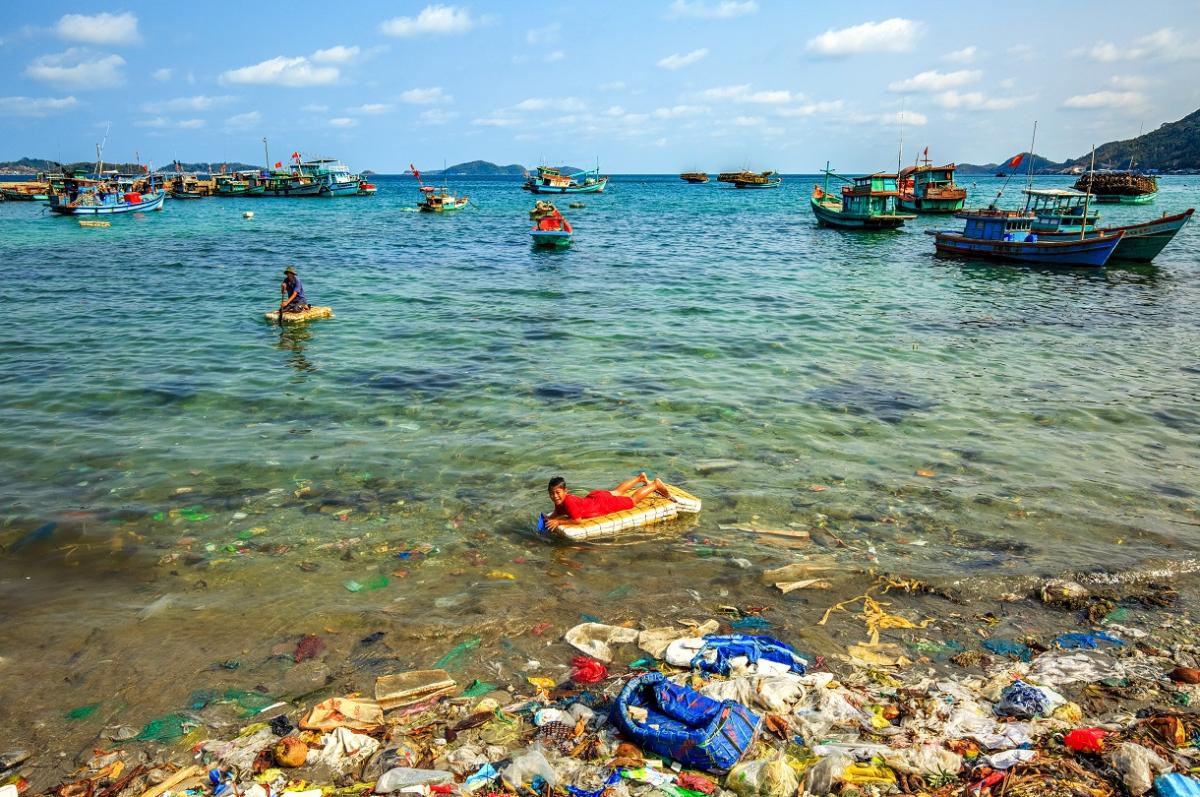New IUCN Report paves the way for a standardised methodology to measure plastic leakage
On 27 August 2019 at the World Water Week in Sweden, IUCN launched a report that identified numerous gaps and opportunities for developing a standard methodology to measure the extent of the plastic pollution crisis. The urgently needed methodology will provide decision makers with improved data collection and analysis on plastic waste management at the global, regional and national levels.

Photo: © By Nguyen Quang Ngoc Tonkin/Shutterstock
As recognised during the Third United Nations Environment Assembly (UNEA-3, Nairobi, 2017), there is currently no standard methodology to measure the extent of the plastic problem. Current methodologies do not allow us to better understand the impact of plastic leakage along the value chain, ultimately preventing us from measuring the extent of the plastic pollution problem.
Apart from providing a comprehensive overview of all 19 existing and emerging plastic footprint methodologies for the first time ever, the publication, Review of plastic footprint methodologies: Laying the foundation for the development of a standardised plastic footprint measurement tool also includes a glossary of key terms related to plastics and environmental footprints. This enables the modelling, field and business communities to speak a common language.
The methodologies reviewed in the report identify the abundance and distribution, types and sources, as well as pathways and sinks of plastic pollution at different scales.
There are two types of methodologies: the first comprises methodologies that identify plastic waste streams and recycling rates at the national or business level; the second comprises methodologies that focus on pathway modelling to measure plastic leakage into waterways and oceans, from either mismanaged waste or in the form of microplastics.
An analysis of the review concludes that plastic footprint methodologies are lacking in several ways.
For example, there is a lack of consensus on the physical and socio-economic drivers of plastic leakage and a lack of specific data to establish key parameters of leakage models. Knowledge about the fate of plastic in the environment (e.g. degradation rate) is also absent.
Also, there is a lack of data to conduct impact assessments and to embed plastic impacts within Life Cycle Assessment (LCA) frameworks. Current LCAs do not account for plastic as a pollutant - they assume that 100% collection of waste streams go to landfill, incineration or recycling.
As a result, existing methodologies are not polymer specific. Nor do they allow us to compare the different types of impacts between plastic pollution and other potential environmental impacts. This makes it difficult to design effective models to assess macro and micro plastic leakages and to tackle plastic pollution at source. It also prevents us from understanding the impacts and opportunities related to plastic usage.
“The report underlines the critical need to adopt a holistic, all-encompassing approach to measuring the impact of plastic pollution, one that assesses the entire value chain of plastic products and their entire life cycle,” says IUCN Global Marine and Polar Programme Director, Minna Epps. “Based on the key findings of the report, we are currently working with UN Environment to develop a best-in-class plastic hotspot methodology that can provide key stakeholders with data and analysis needed to inform their decision-making on reducing plastic leakage.”
In line with IUCN’s effort to close the plastic tap, two new publications will be released next month. Both publications stem from the IUCN Baltic Solutions to Plastic Pollution project funded by the Swedish Postcode Foundation.
The Marine Plastic Footprint – Towards a science-based metric for measuring plastic leakage and increasing the materiality and circularity of plastic, comprises a plastic footprint methodology that aims to help companies set priorities for developing circular economy approaches for tackling plastic pollution. It highlights a clear plastic leakage model by having the first comprehensive set of equations and generic data to calculate leakage for plastic sources such as plastic wastes, textile fabrics, tyre dust, micro beads from cosmetics and fishing nets.
Another publication, Plasticus Mare Balticum – A synthesis of integrated research analysis and policy papers, compiles several reports from the IUCN Baltic Sea project. These include reports on private sector surveys on circular economy, estimates of plastic leakage into the Baltic Sea and impacts of plastic pollution on selected endangered species. It also provides an overview of policies on marine litter in riparian Baltic countries, and includes research results from studies carried out in Canada, Sweden and Norway, highlighting how plastic can interfere with ice formation and melting, and how it influences the earth’s ability to reflect sun’s rays into space.
View the new report, Review of plastic footprint methodologies: Laying the foundation for the development of a standardised plastic footprint measurement tool, here.
___________________
About IUCN’s Close the Plastic Tap Programme
IUCN’s programme of work on plastics has focused principally on seeking solutions to close the plastic tap and tackle plastic pollution at its source. This involves the mobilisation of a wide range of stakeholders including governments, industries and society. It also involves enhancing our understanding of the problem through research and the compilation of the latest science and data on the issue.



